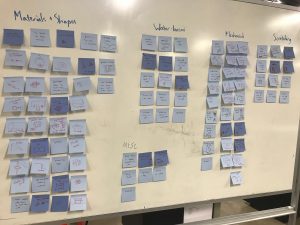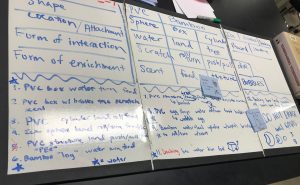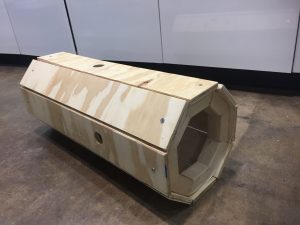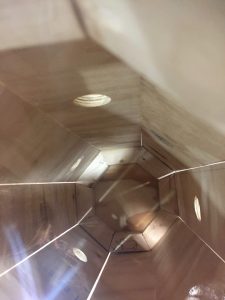Hello my twitter followers dear blog readers, my name is Eduardo Pagnoncelli Lorandi ( I’m still trying to fix my riceId ) and this week was all about these long nose boys:

Yes, I added an image!
As I said in the previous post, the Houston Zoo designed us a task to develop Enrichment devices for the Tapirs. as our Project to execute the ideas learnt in the Bootcamp.
For those who don’t know, Enrichment Devices are “toys” for captivity keep animals which should not only entertain it\the public, but also explore some activities/characteristics that this animal would have in the wild.
On Wednesday, everybody at SEED went to the Zoo to look for the Tapirs, and also have a client interview with Memory, the zoo keeper responsible for them. After she showed us some currently used Enticement Devices, and answered our questions about constrains, limitations, etc… we came back to OEDK to start the development of our device.
Time to apply those long videos and quizes!
The mighty team Tiger have gathered to put in practice the Engineering Design Process protocol we learnt at Bootcamp. First, we researched even further about limitations on our device, and with that, defined our first costrains and Design Criteria.
After ranking them at the PCC process, we started brainstorming ideas for our device, alongside defining design blocks to iterate through different possibilities.
After lots of Screening, we finally got to our final ideas which have been scored, and in the end, the winner was a design-block generated one: A floating, octogonal, cylindrical, composite decking object, which would have holes on it, where the keeper should fill with food, and the tapirs would try to get the food out of it by rolling and turning it on the water.
Hands On!

Low fidelity prototype: well… what matters is the idea behind it, right?

Handled with total accuracy!
We started developing the low fidelity prototype, which even though it looks like a mess, actually gave a good idea of the device functionalities. After that, we went to the “hardest” part, I must say, where we should build a medium fidelity prototype, using more serious materials and equipments, such as the woodshop tools!
The team struggled a little bit because of the octogonal shape, the angles, and using those big kids toys nobody ever used before, but it didn’t stopped us to create a beautiful device! It closely resembles our expected final product, with the main differences being: wood used instead of composite decking and 2/3 size scale.
In the end, we had a very respectable prototype, and also, even with all the complications and struggles, we had a lot of fun and could get a better taste of how important it is to follow Design Patterns when solving a problem, and, as a TI-ish guy, I’m not talking only about Engineering Processes, but also for all kind of professional experiences!




